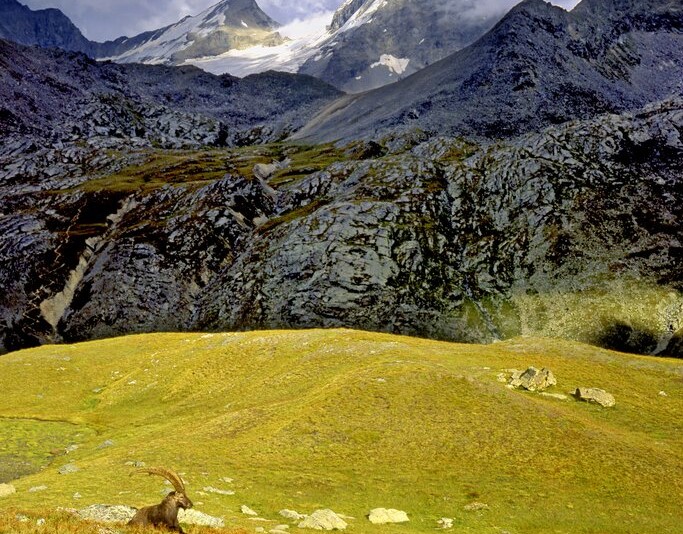ECOPOTENTIAL – Environmental observation at the service of Protected Areas
Protected Areas (PAs), for example national parks, are designated as such by international bodies, for instance the International Union for Conservation of Nature. They are crucial for conserving biodiversity and mitigating the impacts of climate change, storing around 15 % of terrestrial carbon globally. Additionally, PAs support livelihoods by hosting cultural and leisure activities, while contributing to health and well-being. Yet, human activities directly and indirectly (e.g. climate change, pollution, pests, invasive species) increasingly pose a threat to these areas. Earth Observation (EO), ground-based as well as remote sensing, presents a unique opportunity to study the health of PAs, offering valuable data to support evidence-based conservation and restoration.
Shoulder-to-shoulder for evidence-based management
The EU-supported ECOPOTENTIAL (Improving Future Ecosystem Benefits Through Earth Observations) project created a range of EO products and services providing accurate information about the state and trends of different ecosystems found in PAs across Europe and beyond. Guided by a ‘whole system approach’, ECOPOTENTIAL combined available EO resources, for example data from the Copernicus Programme, for use by a multidisciplinary team of 48 partners. “By definition, PAs are better preserved than other ecosystems and so offer a treasure trove of data. ECOPOTENTIAL’s PAs were carefully chosen for a balanced representation of ecosystems,” explains Antonello Provenzale from the Italian National Research Council (CNR), and project coordinator. “But PAs are not only biological. They are part of wider environmental, social and economic processes, so there is no magic solution for capturing information about them. Remote sensing, field data and models individually are not enough, they have to be combined.” To ensure that the EO products and services met real needs, the end users (principally park technicians and managers) were designated as co-creators from the beginning. “Naturally, scientists and managers had different visions initially. But creating early opportunities for both to exchange expertise, helped overcome these barriers,” notes Provenzale. “Language and cultural barriers were also surmounted thanks to local project researchers working shoulder-to-shoulder with PA staff in the field.”
The Sierra Nevada: from reactive to proactive conservation
The Sierra Nevada high mountain region in southern Spain is one of the Mediterranean’s biodiversity hotspots. It is also a source of agriculture, fresh water and timber, helps capture carbon and prevent floods, and offers recreational and educational opportunities. A series of workshops with scientists, technicians and conservation managers identified the key EO monitoring tools needed for the region. “Smaller planes and drones capturing imagery at lower altitude and connected to on-the-spot sensors offer more precise information, with spatial scales ranging from individual trees to the whole of the Sierra Nevada,” says Blanca Ramos from Sierra Nevada National Park. The results of EO and big data analysis were used to simulate future scenarios to assess the impact of current conservation management decisions. Studies also analysed social media content, in combination with EO data, to maximise leisure opportunities. “Our work can help engage the general public, with more accurate information leading to Protected Areas that people really want to visit,” adds Ramos.
Results branching out
ECOPOTENTIAL’s results will now contribute to the knowledge base of the EU LIFE programme which funds environmental protection projects. Indeed, some ECOPOTENTIAL partners, such as Gran Paradiso National Park in Italy, are already actively involved with this initiative. The team’s catalogue of products is also compliant with Global Earth Observation System of Systems data sharing principles. ECOPOTENTIAL’s products and services have also been incorporated into research infrastructures such as eLTER RI and LifeWatch ERIC, as well as into the Group on Earth Observations Global Ecosystem Initiative (GEO ECO). As part of its outreach strategy, ECOPOTENTIAL hosted a travelling photo exhibition to showcase not only the use of EO for natural ecosystems with satellite pictures, but also the variety and beauty of European PAs, with photos donated by nature photographers. After being exhibited at the European Parliament and the Committee of the Regions in Brussels in 2019, the exhibition toured Germany, Greece and Italy, enabling an even wider audience to enjoy the stunning landscape images.
Keywords
ECOPOTENTIAL, Earth Observation, EO, Protected Areas, PAs, LIFE programme



